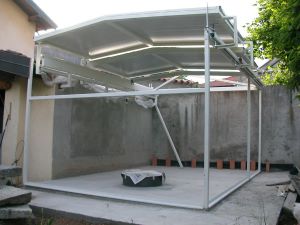
|
|
|
|

 |
 |
|
| The
control room and, below, the telescope room. |
The location before the observatory construction. | |
 |
 |
|
| The
mechanical frame of the sliding roofs. |
Re-mounting
of
the
telescope. |
|
|